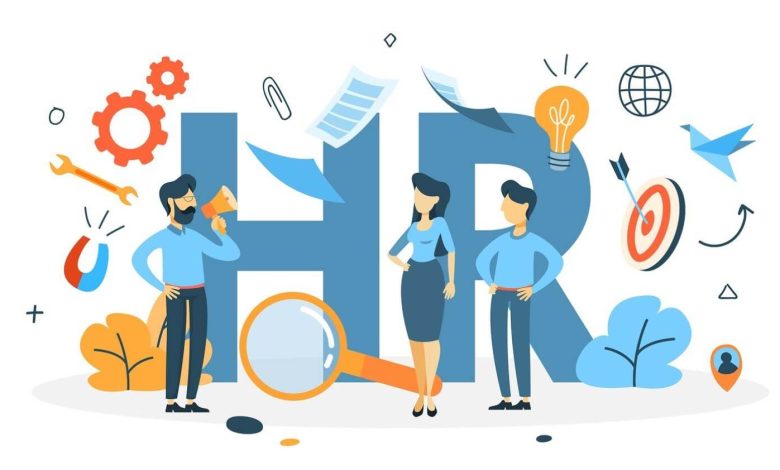In-Depth Understanding about Learning & Development in HR

When it comes to surviving in this constantly changing world, it becomes vital to focus on individual learning and development.
But do you ever question why this element is also important in the realm of HR? It is a great implementation when it comes to improving work culture, filling the skill gap, and boosting employee engagement. It is also seen that focusing on this aspect of the company takes the profit of the company to the next level.
So, Let’s dive deep into the world of HR and gain a comprehensive understanding of L&D. Aside from that; we will also shed light on its purposes and processes. So keep reading.
What is Learning & Development in HR
HR is a field that is mainly related to managing human resources in the company.
And one of its significant subsets is learning and development. This aspect of the HR department deals with training and inspiring employees to develop new skills to uplift their performance. The reason behind doing it is to upskill them to carry out their tasks in a better way in their existing role. Other than that, this approach can also assist in reskilling them for an advanced position.
As a result, the L&D helps fill the skill gap in the organization and level up the workforce’s performance. This is the primary intention of this subset. For instance, if any agency does not train their employees with the new technologies and professional certifications like cipd, then how will they compete in the market? This is why this part of HR is necessary to improve the employee’s efficiency, satisfaction, and experience.
With the various tools and strategies, L&D take care of all the talent management and use learning for acquiring, polishing, maximizing, and reliance on the workers.
Purpose of Learning & Development In HRM
Now that you understand how the L&D works in the HR department, let’s see what else it has to offer.
If you think that this responsibility is only limited to the growth of an employee, that it’s wrong. There are several other purposes for this function as well. How about taking a look at those?
Boost company’s productivity
As we are aware that L&D helps the employee in mastering a skill
Due to this reason, they get trained to use the latest tools and technology, which improves their productivity. And when they feel more skilled, it will motivate them to work more. In addition to that, they will become ready to tackle any obstacle and adapt to new advancements quickly. This function helps the company develop a learning culture and employee bonding, resulting in more productivity.
Improve the quality of product or service
Due to learning and development, talent runs around the company.
The seniors in the organization pass on their knowledge and techniques to the juniors. As a result, employees grasp and implement the tips and skills for better performance in a short time. This approach aids them in developing top-quality products and services, which lead to the same methods and outputs.
Reduce expenses & mistakes
When the employees get the proper training, then they become skilled enough to make no errors in their work.
This results in efficient outcomes, and no material will be used in remanufacturing the products. Or less time consumed for offering a service. For instance, if some assignmenthelp service works on educating their employees, then those skilled workers offer error-free outcomes to their customers. As a result, it increases the buyer’s satisfaction.
Aside from that, without the right training, errors lead to defective products and unsatisfactory services. Due to that, the company has to put more expenses. Thus, it is necessary for a company to focus on L&D.
Decrease employee turnover
The L&D department lets the employees grow and upgrade their abilities.
So when people think they are flourishing more in an environment, they are likely to stay there longer. As a result, these HR functions lessen employee turnover rate.
Another reason is that the L&D assists in the rise in the level of job satisfaction and belonging of the worker in the company.
With the above pointers, you are surely aware of the purposes behind the learning and development function of the HR department. Now you might be curious about the action HR takes to train the employees. So, let’s have a view of the five processes that make the L&D happen.
What are the 5 processes in L&D?
The primary goal of the learning and development of the employees is to help them reach their highest potential. And for this cause, they use various approaches to make it happen. For your awareness, we are listing a few of them below.
- Guiding and mentoring the employees in their areas of improvement
- Keep the check and balance of workforce performances
- Collecting the reviews of the seniors and evaluating them for leveling up the employee’s performance
- Incorporating various activities and workshops for educating the workers
- Offering valuable and latest training during the job
- Appreciating employees for their achievements and boosting their confidence
- Make sure the workers are satisfied with the company by offering them perks and benefits
All in all, a few things are the duties of an HR for the growth and development of their company’s employees. So, if you want to reduce the retention rate and maximize the productivity of the business, then you must work on your worker’s L&D.
Conclusion
We all might have heard that “employees are the company’s most valuable asset”. So, if you want to maintain those assets, you must work on their learning and development. Research has shown that many employees leave an organization because they feel they are not improving there.
This is why we have covered all the important information about the impact of L&D in the HR department. So take advantage of it for increasing the profit of the business while creating a growth environment in the company. Other than that, it is vital for the management to take care of the employee’s mental health as well.
The fact is this is one of the reasons why they didn’t get satisfied with the work environment. Thus, it is recommended to eliminate the toxic and pressurized culture that disturbs the worker’s work-life balance. Make efforts to keep your employees up to date so they can come up with the best results.
